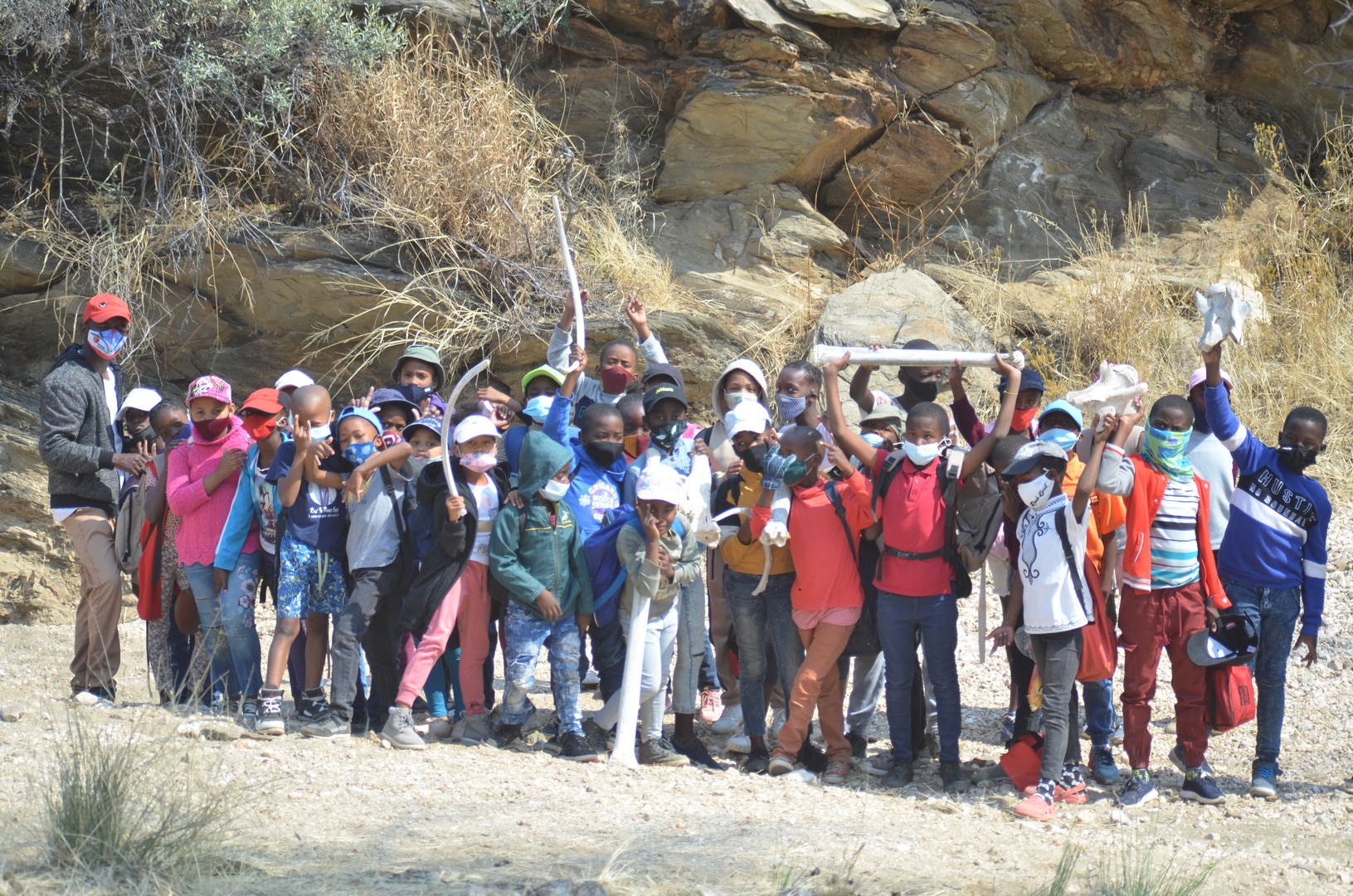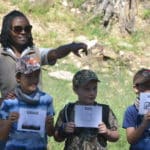“This is the best day of my life! This is the first time I have ever seen a giraffe – and we got so close to her!” shouts a young Grade 4 student from a primary school in Namibia’s capital Windhoek at the end of an educational and fun outing with the environmental education team of the Giraffe Conservation Foundation (GCF).
GCF’s Khomas Environmental Education Programme (KEEP) team takes local primary school students on a 3km hike in Daan Viljoen Game Reserve just outside the capital for an interactive, fun, and hands-on experience. Since starting the programme in 2016, over 11000 young Namibian students and 400 teachers have participated in KEEP.
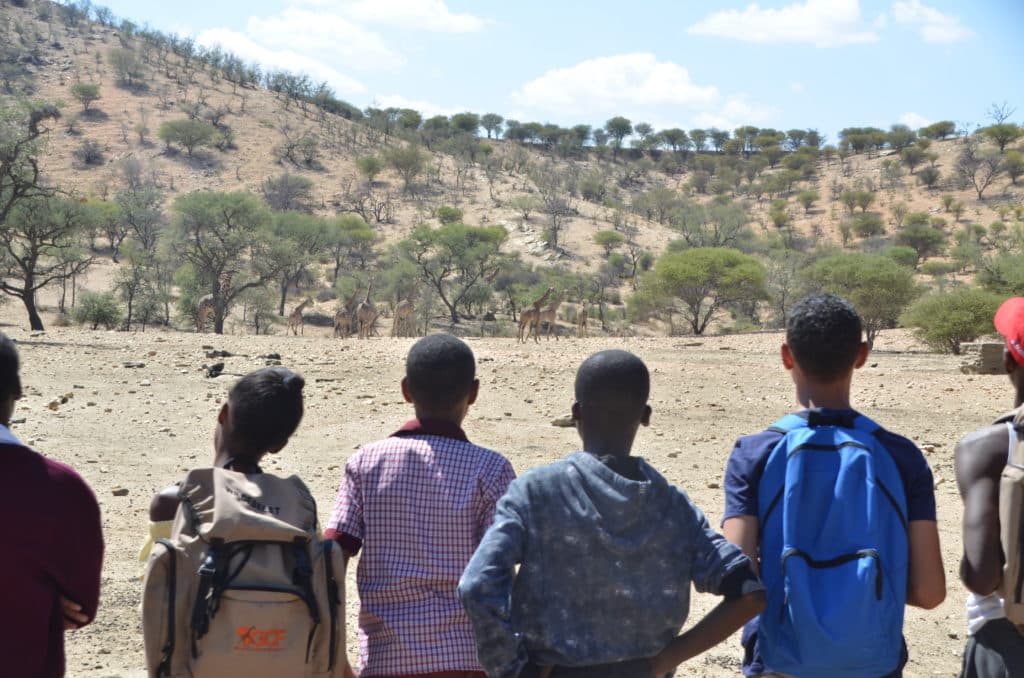
Students observe a giraffe in the Daan Viljoen Game Reserve as a part of the KEEP nature education programme (Image Credits: Giraffe Conservation Foundation).
The Daan Viljoen Game Reserve, just 20 km from Windhoek, turns into an outdoor classroom on a regular basis.
As soon as the bus enters the reserve, you can hear children screaming with excitement as they spot their first wild animals by the side of the road. For many children, this is the very first time they are seeing wildlife and their first close encounter with the stark beauty of Namibia’s natural environment.
After a quick briefing, most students can’t wait to explore their surroundings, and within minutes, often up to 45 children run down the first hill towards the hiking trail. There is too much excitement to listen to the first instructions.
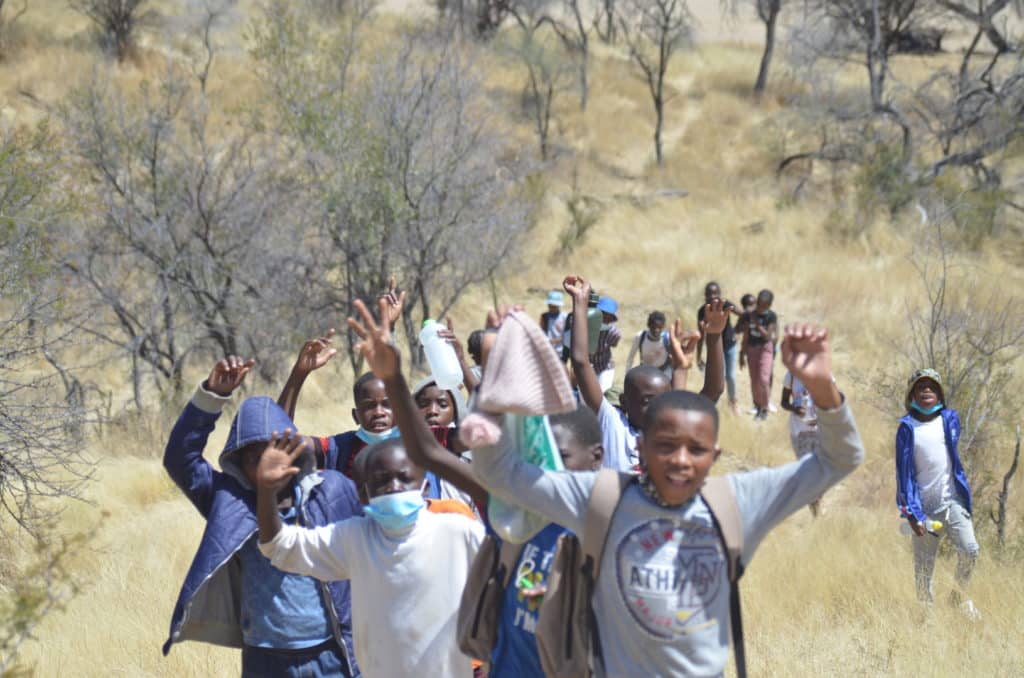
Excited children rush down the trail, eager to spot Namibia’s wildlife (Image Credits: Giraffe Conservation Foundation).
The field day starts off with a wildlife tracking and plant identification activity. This means that the young Namibians search for animal spoors and try to identify these using the GCF Nature Workbook. The tracks they encounter include giraffe, oryx, wildebeest, zebra, kudu or even jackal. Some young trackers are convinced that they have spotted elephant or lion spoors; luckily, these animals do not live in the park, so everyone is safe. However, we have come across fresh leopard and hyena spoor on occasion – always the cause for much excitement.
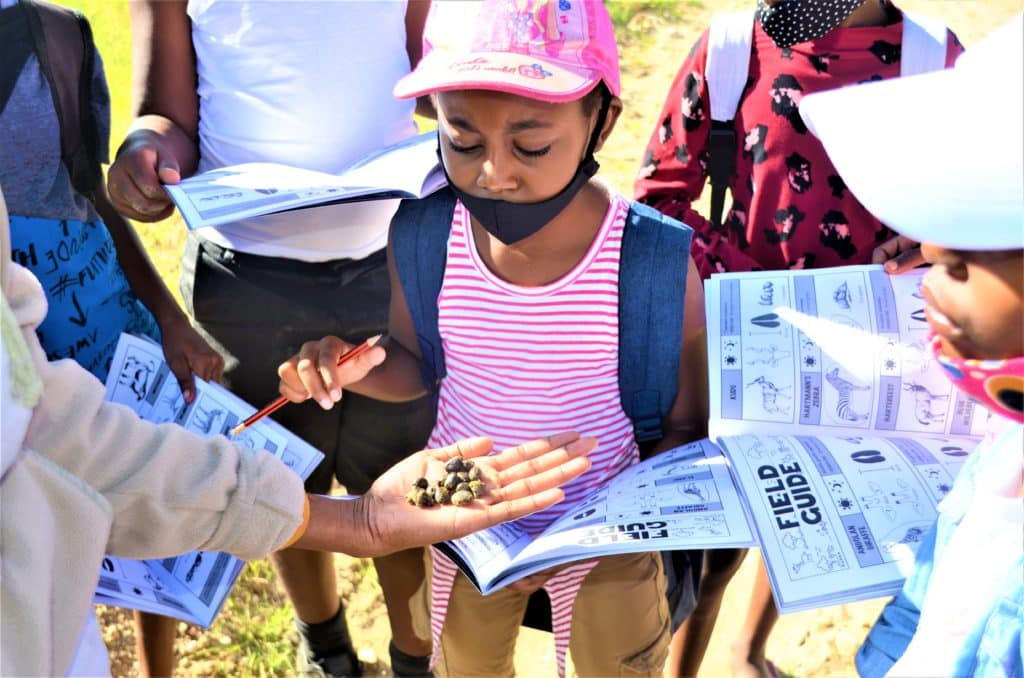
Students learn skills such as identifying animal droppings and tracking as a part of the programme (Image Credits: Giraffe Conservation Foundation).
Tracking is an all-time favorite activity, and even on days when we don’t see any animals, the sheer potential for what may be around the corner keeps the group enthralled. Using our bush voices and marshmallow feet is a must, and it leaves us hopeful about spotting the animals we are tracking.
Identifying trees and investigating animal droppings (poo) teaches the children about grazers, browsers, as well as ruminants and non-ruminants. We also discuss the differences between carnivores, herbivores, and omnivores, all while resting in the shade of an Acacia tree (or should we say Vachellia tree) for a quick drink and a healthy snack for sustenance. We also discuss other topics such as our environment, living and non-living things and their basic needs, and the importance of plants.
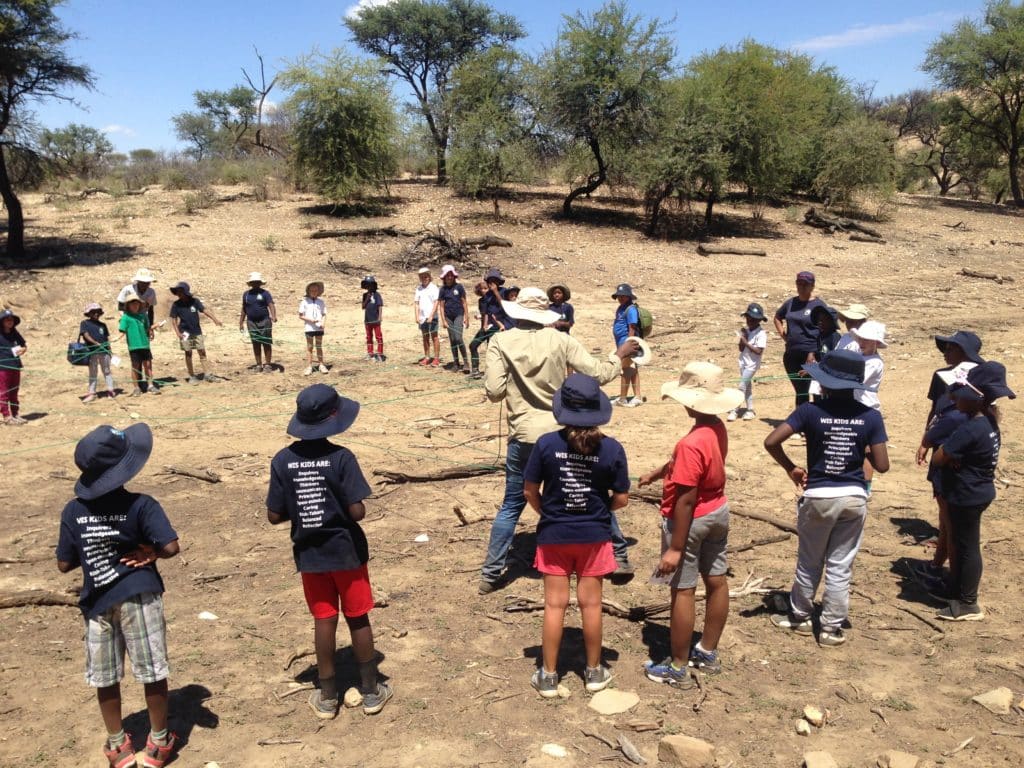
The students play interactive games, such as building a ‘web of life,’ to better understand the interrelatedness of the natural world (Image Credits: Giraffe Conservation Foundation).
As the hike continues, we remind the students about safety in the bush. Once everyone is aware of what to do in case we encounter a snake or a dangerous animal, we move on to investigate some giraffe bones. The sheer length of the leg bones is impressive and a great conversation starter to talk about giraffes and learn some fascinating giraffe facts. At the next stop, we discuss important and relevant environmental topics such as ecosystems, waste, and water management. In addition to talking about these, the students participate in fun and interactive games and activities, such as building their own ‘eco-pyramid’ to explore what happens when some part is removed and setting up a ‘food chain’ or developing a complex ‘web of life’. These games help them gain a better understanding of how everything is important and interlinked, whether big or small, living or non-living, and has a role to play in an ecosystem.
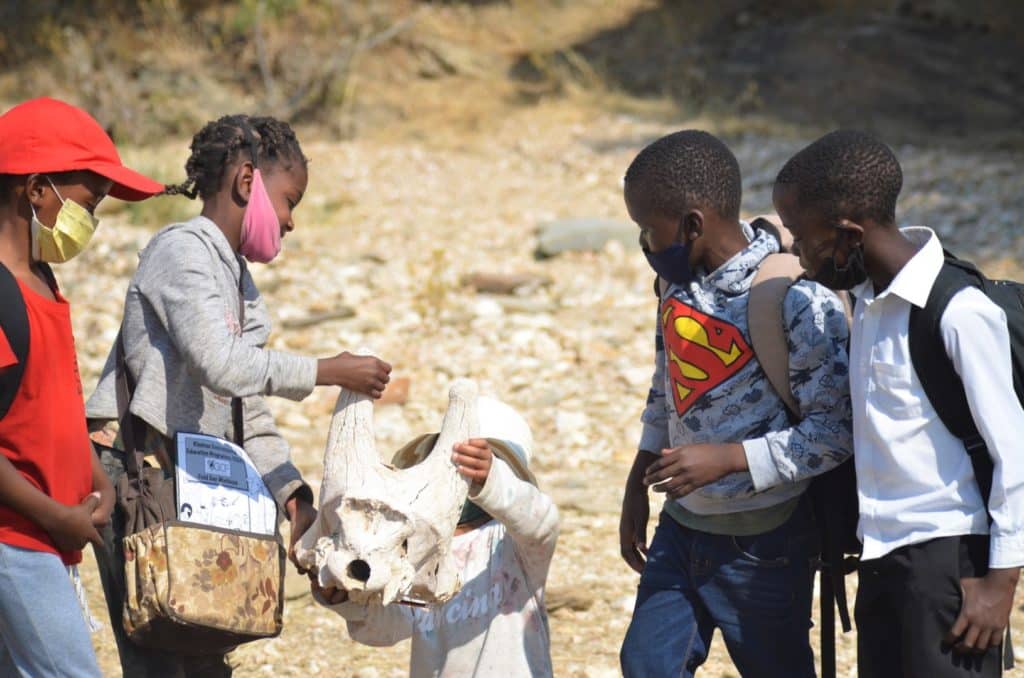
Students inspect a giraffe skull as a part of the KEEP programme (Image Credits: Giraffe Conservation Foundation).
As we pass a dam, we often find animals drinking. The dam is an excellent reminder about the importance of water and how to save it – particular important in a dry country like Namibia! These are lessons that can be taken back to school, to their homes and to the communities. And this is when our hike comes to an end, mostly to the immense disappointment of our young participants.
But this would not be a real school day if it ended without homework. We ask the students to take their newly acquired knowledge and skills home and to take action at their schools, their homes and in their communities. The last message that we send them home with is: Stick your neck out and make a difference!

